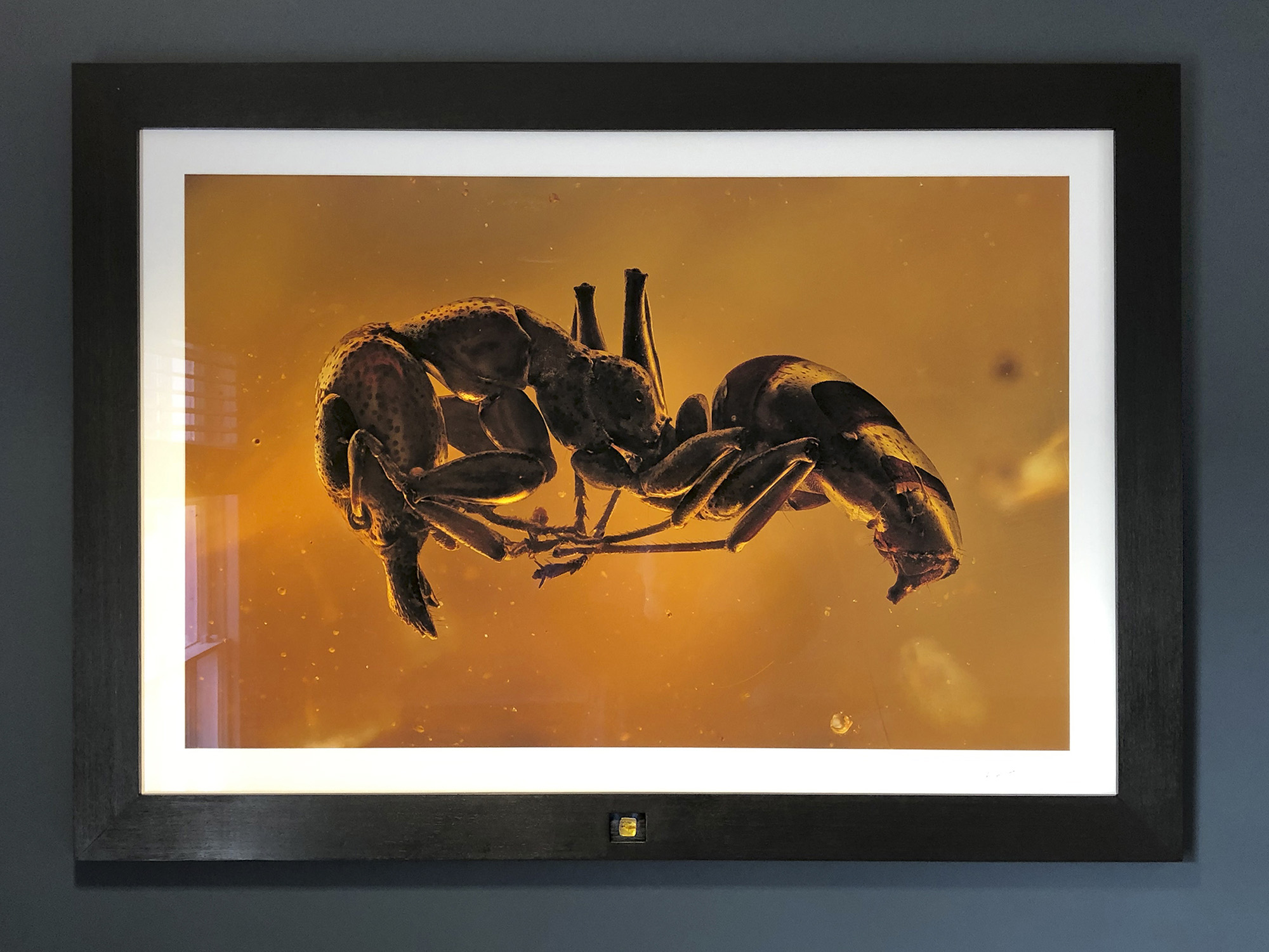The Amber series displays insects and flora encapsulated within hardened tree resin. The specimens are from the Baltic region and are dated between 40-45 million years, no specimen in this series is longer than 3mm.
The Amber series is the natural progression from the Microsculpture project, taking the technical difficulty of extreme macro photography to the next level. There are just 10 images in the Amber series. These specimens were selected from many thousands with the criteria being the clarity of the amber, the position of the subject and the level of preservation. Due to the rarity of suitable specimens, the project took over 2 years to complete.
One of the biggest challenges of photographing amber inclusions is the fact that they are encased within a light bending substance. Any light that hits the surface of the amber is automatically scattered by the microscopic scratches on the surface. This causes the light to refract which in turn creates substandard images. To overcome this the amber was finely polished and then photographed whilst suspended in a fluid of a similar refractive index. This allowed the light to penetrate the amber in a straighter path, providing greater control over its direction which enabled the capture of fine levels of detail.
Not all photographs were successful though. Sarah collected and photographed over 40 specimens, with only the 10 shown here meeting the required standard for display. The reason for this is that Amber was once a viscus fluid and as it flowed out of the tree it created waves of sap that over time hardened. Those waves created channels within the Amber that seem to bend the the light once its inside the amber, making it almost impossible to capture fine detail.
The frames for the Amber series prints are also unique. They are created from Bog Oak which is a rare wood that has been preserved underground, the wood used for the Amber series frames is over 5,500 years old. Bog Oak is twice as dense as regular oak and it took over 8 months slowly drying in the kiln before it was ready to be worked. The natural black colour is created as a result of a chemical reaction occurring between the tannins in the oak and soluble irons present in the mineral subsoil.
A beautiful feature of these handmade frames though is that the actual piece of amber that contains the specimen in the photograph is mounted within a small cavity on the lower edge of the frame, providing the viewer with a unique sense of scale.
